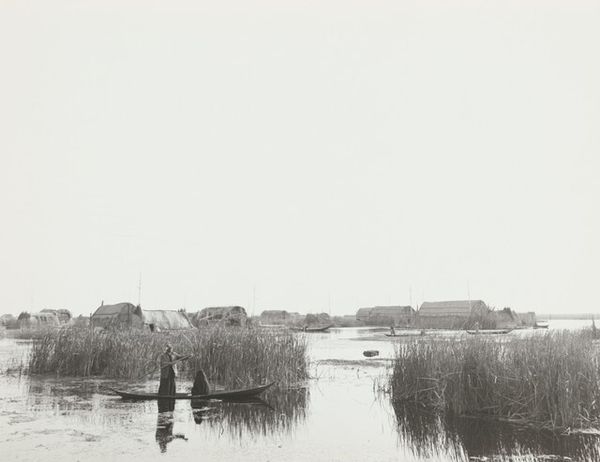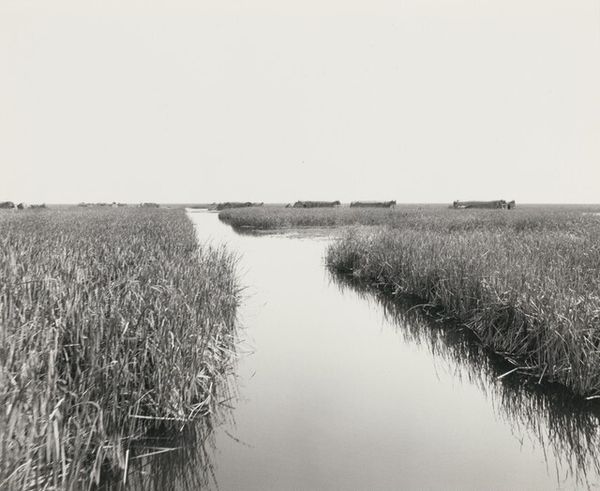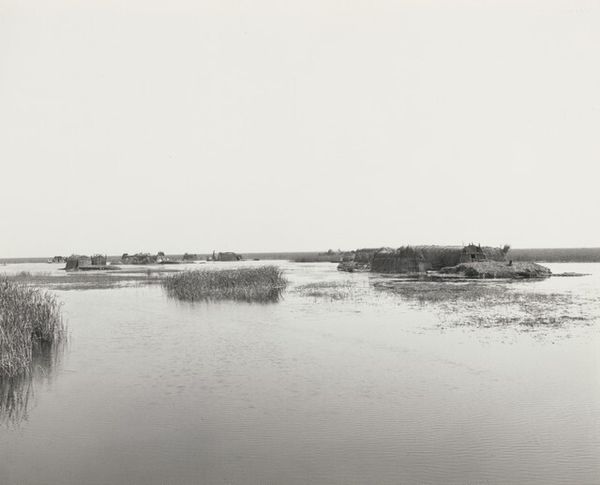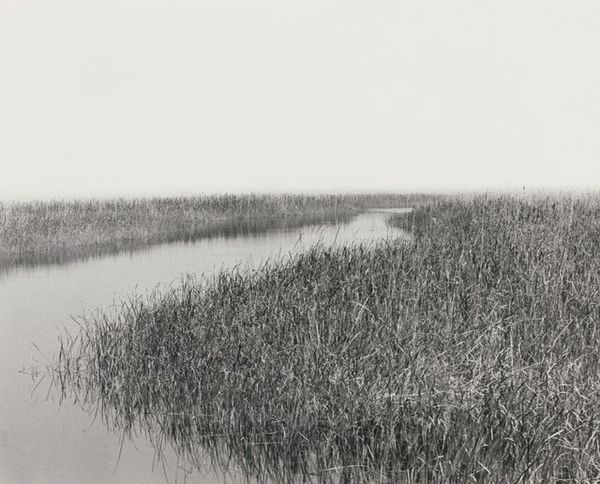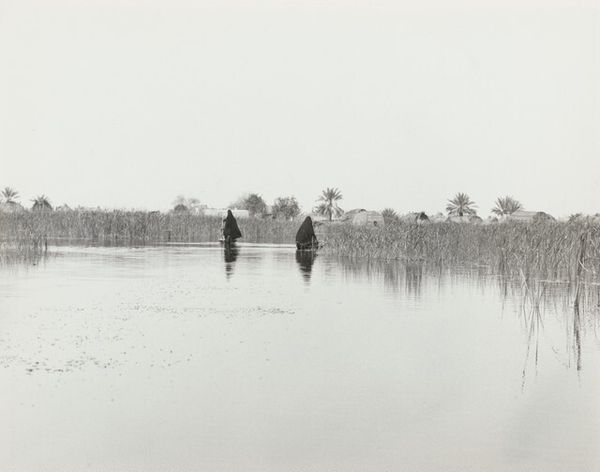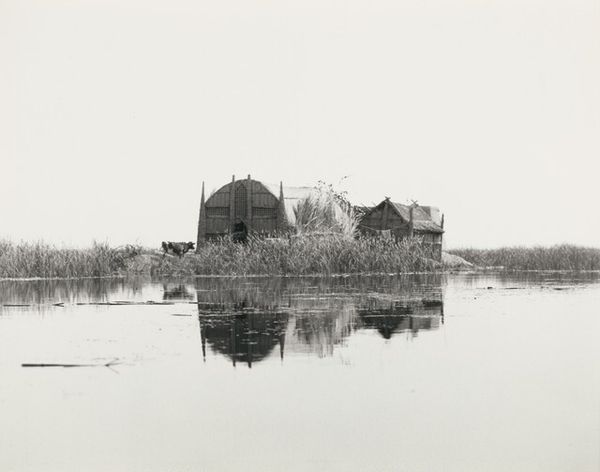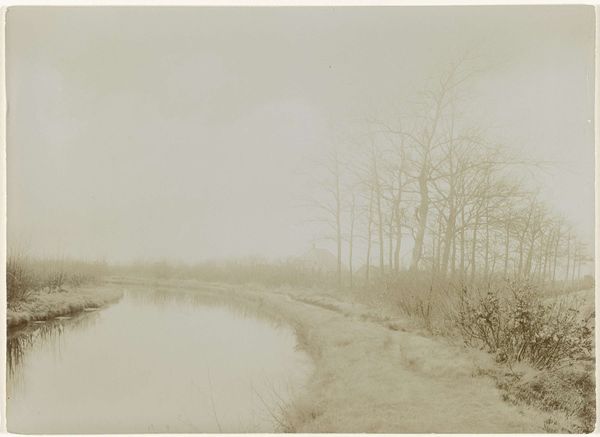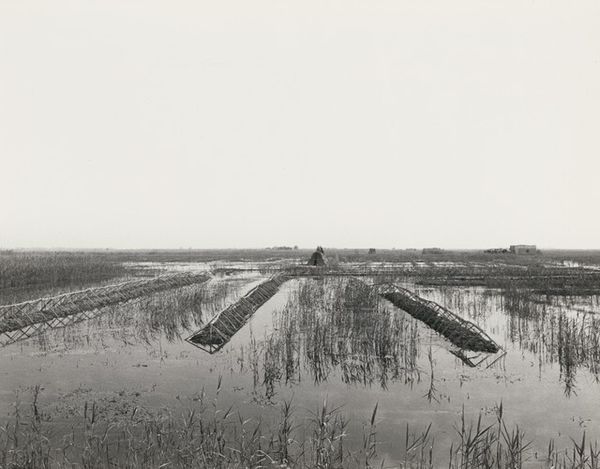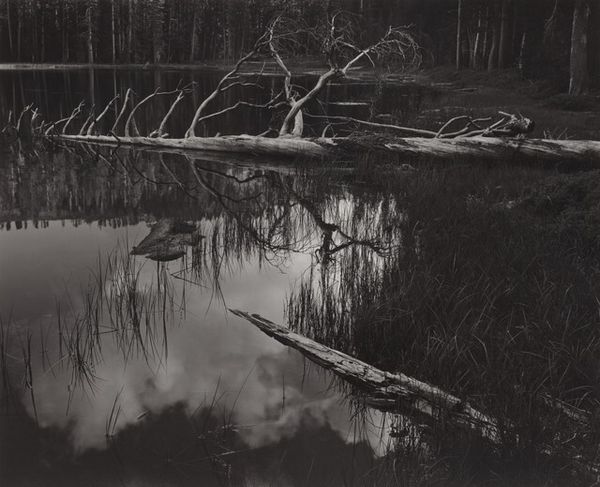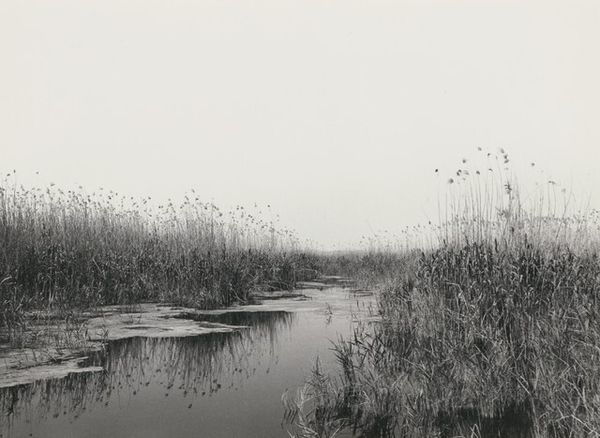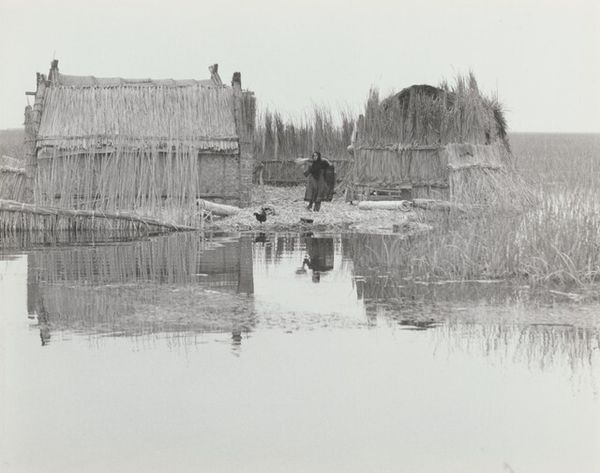
photography
#
cloudy
#
natural shape and form
#
conceptual-art
#
snowscape
#
countryside
#
postmodernism
#
landscape
#
photography
#
outdoor scenery
#
environmental-art
#
low atmospheric-weather contrast
#
sky photography
#
monochrome photography
#
shape of cloud
#
monochrome
#
shadow overcast
Dimensions: image/sheet: 24.7 × 24 cm (9 3/4 × 9 7/16 in.)
Copyright: National Gallery of Art: CC0 1.0
Curator: Ursula Schulz-Dornburg’s "Untitled" photograph from 1980 captures a rather bleak waterscape, wouldn’t you agree? Editor: It certainly evokes a sense of desolation, almost like a scene from a post-apocalyptic film. The monochrome tones amplify the starkness, making you focus on the sheer emptiness. What kind of paper was she using, and how does it influence the image's surface quality? Curator: Knowing Schulz-Dornburg, her material choices were deliberate, likely reflecting available resources and the printing techniques of the time. Her use of photography pushes against traditional notions of landscape—more a record of overlooked spaces. Editor: Precisely, her work always investigates sites shaped by human presence. Think about it in terms of social history. Whose labor cultivated these landscapes, altered the waterways, and depended on them for sustenance? Curator: A critical point! It reminds us that what we perceive as "nature" is so often the product of human activity. Looking at the subdued lighting, I am curious about her shooting process. It gives us a rather desolate, but yet familiar countryside feeling. Editor: Agreed. These understated qualities emphasize her socio-political awareness. These desolate monochrome landscapes force you to confront questions about land usage and forgotten or dismissed rural spaces. Also, notice that low atmospheric weather contrast and shadow. Curator: So, considering the context of postmodernism, how might we understand this photograph's place in the artistic landscape of the 1980s? I feel a bit a contradiction when viewing the space... Editor: Well, postmodernism valued dismantling established narratives. Schulz-Dornburg subverts romantic landscape traditions. Rather than portraying natural beauty, she uses photography as a documentary tool. By capturing forgotten landscapes, she critiques existing hierarchies in art. Curator: Ultimately, she gives a quiet but insistent voice to overlooked places and communities, demanding that we acknowledge the complexities embedded in seemingly simple scenes. Editor: Exactly. It is in the silent, grey spaces of this picture where the true history resides. A history built of human presence and our collective neglect of what remains behind.
Comments
No comments
Be the first to comment and join the conversation on the ultimate creative platform.
